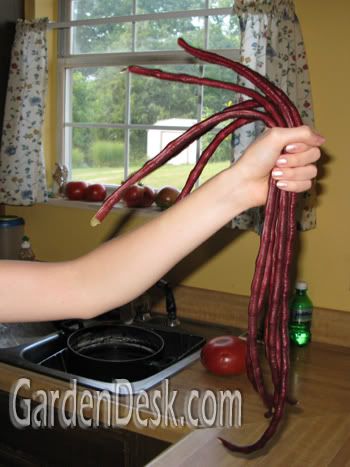How can you tell when the sweet corn is ready? When the raccoons eat half of it!

First of all, thank you to all who commented on my last post and especially those who voted on which post they would like me to write next. The winners were the potatoes in a garbage can update and the extra high raised bed trial details. Even though there weren't very many votes for my corn efforts, I have to write this one first because it is more timely.
I put up a six foot tall fence around the corn bed and I knew that wouldn't keep the coons out entirely. I was planning to fasten a roll of floppy chicken wire to the top of the fence to keep them from being able to successfully climb over it. I headed out to the corn with my roll of chicken wire only to discover that they had struck the night before:

I was too late. Look at how they diligently ate every kernel! So now, instead of taking the time to put on the chicken wire, we decided to pick the remaining ears of corn.


The raccoons ate over half of the ears but we still got a nice basket full. I'm happy with that especially considering the poor start this corn had.

Look how beautiful they look!


That last closeup doesn't really show the bi-color aspect of this corn. This is the Japanese Bicolor corn - Mirai 301BC. I first wanted to grow this early last year when I wrote a post about this
Mirai corn from Park Seed.
This is a better picture of the bi-color aspect:

I have to say, Park delivered on its promise. This might very well be the best sweet corn I have ever eaten. Next year I hope to find a spot far enough in the yard to grow another variety (probably Silver Queen) along with Mirai for a true taste test.
As for this year, the Mirai was delicious but I failed in part in my battle against the coons. Before I leave you, let me at least show you how I wanted to keep them out but was too slow. First of all, I was going to aim my Scarecrow at the corn. The scarecrow was on the night of the attack, but it was guarding the beans against a groundhog attack.
Secondly, I was going to use the chicken wire like I mentioned earlier. I went ahead and fastened a portion of the wire to better show you what I had planned. This is what it would look like:

The chicken wire is fastened only at the bottom to the top of the fence. It stays floppy at the top with no support so when a raccoon attempts to climb it, it folds down on him which essentially dumps him off. Allow me to demonstrate with my daughters stuffed animal:

The leopard raccoon climbs the fence and reaches the chicken wire. When it continues up the chicken wire, its own weight causes the wire to bend down over it.

Not this time Ricky!
I'm pretty sure this would work well but I'll have to wait until next year to confirm it. I hope this idea can still benefit someone else this year.
I will soon be writing the raised bed post, a rainbow of cherry tomatoes post, and I will soon be dumping over the potato can to see how well that worked. Stay tuned and thanks for your patience.




































